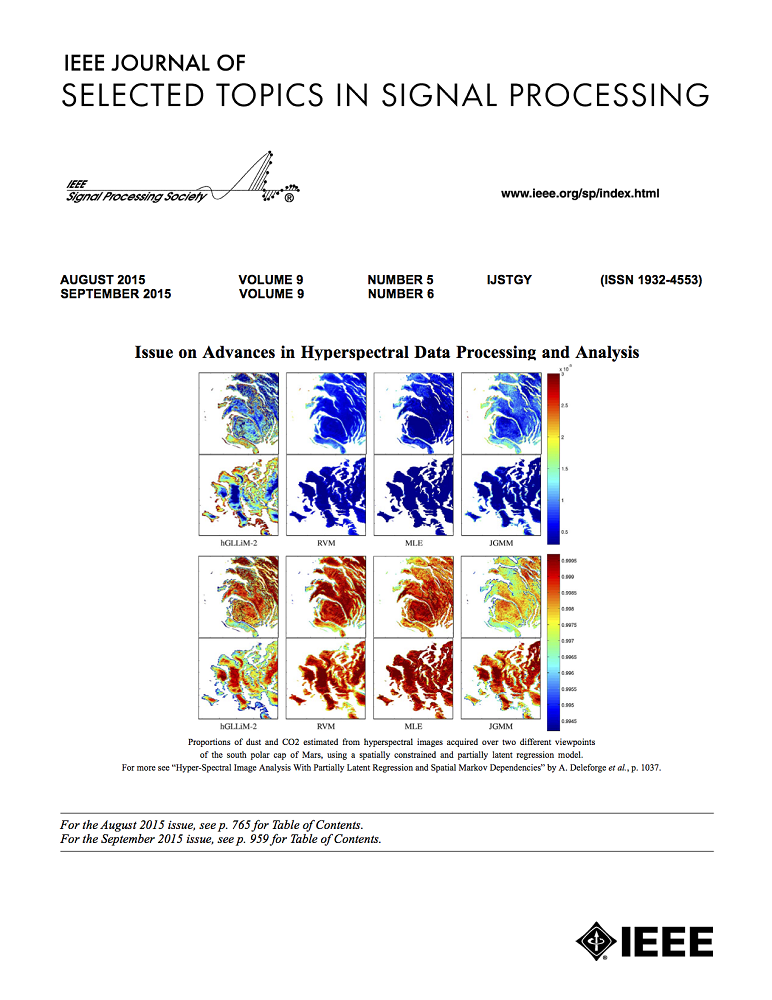利用压缩传感进行多频率球形近场天线测量
IF 8.7
1区 工程技术
Q1 ENGINEERING, ELECTRICAL & ELECTRONIC
IEEE Journal of Selected Topics in Signal Processing
Pub Date : 2024-07-10
DOI:10.1109/JSTSP.2024.3424310
引用次数: 0
摘要
我们提出了用于宽带球形近场测量的压缩传感方法,该方法可降低测量要求,超越传统单频压缩传感方法。我们的方法使用了两种不同的压缩信号模型--基于稀疏性的模型和基于低秩的模型,我们使用模拟的标准增益喇叭天线建立了这两种模型的可行性。在测试设备的温和假设条件下,我们证明基于稀疏性的宽带压缩传感比单频压缩传感能显著减少测量次数。通过数值实验,我们发现我们提出的低秩模型也是实现宽带压缩传感的有效方法,其性能与基于稀疏性的最佳宽带方法相当。作为这些最佳结果的例证,即使存在测量噪声,我们提出的方法也能使用传统采样所需的约 1/4 测量值,实现 -40 dB 的相对误差。这相当于对每个未知数进行约 1/2 次采样,而传统的球面近场测量对每个未知数至少需要约 2 次测量。本文章由计算机程序翻译,如有差异,请以英文原文为准。
Multi-Frequency Spherical Near-Field Antenna Measurements Using Compressive Sensing
We propose compressive sensing approaches for broadband spherical near-field measurements that reduce measurement demands beyond what is achievable using conventional single-frequency compressive sensing. Our approaches use two different compressive signal models—sparsity-based and low-rank-based—whose viability we establish using a simulated standard gain horn antenna. Under mild assumptions on the device being tested, we prove that sparsity-based broadband compressive sensing provides significant measurement number reductions over single-frequency compressive sensing. We find that our proposed low-rank model also provides an effective means of achieving broadband compressive sensing, using numerical experiments, with performance on par with the best broadband sparsity-based method. Exemplifying these best-case results, even in the presence of measurement noise, the methods we propose can achieve relative errors of −40 dB using about 1/4 of the measurements required for conventional sampling. This is equivalent to about 1/2 sample per unknown, whereas traditional spherical near-field measurements require a minimum of roughly 2 measurements per unknown.
求助全文
通过发布文献求助,成功后即可免费获取论文全文。
去求助
来源期刊

IEEE Journal of Selected Topics in Signal Processing
工程技术-工程:电子与电气
CiteScore
19.00
自引率
1.30%
发文量
135
审稿时长
3 months
期刊介绍:
The IEEE Journal of Selected Topics in Signal Processing (JSTSP) focuses on the Field of Interest of the IEEE Signal Processing Society, which encompasses the theory and application of various signal processing techniques. These techniques include filtering, coding, transmitting, estimating, detecting, analyzing, recognizing, synthesizing, recording, and reproducing signals using digital or analog devices. The term "signal" covers a wide range of data types, including audio, video, speech, image, communication, geophysical, sonar, radar, medical, musical, and others.
The journal format allows for in-depth exploration of signal processing topics, enabling the Society to cover both established and emerging areas. This includes interdisciplinary fields such as biomedical engineering and language processing, as well as areas not traditionally associated with engineering.
 求助内容:
求助内容: 应助结果提醒方式:
应助结果提醒方式:


